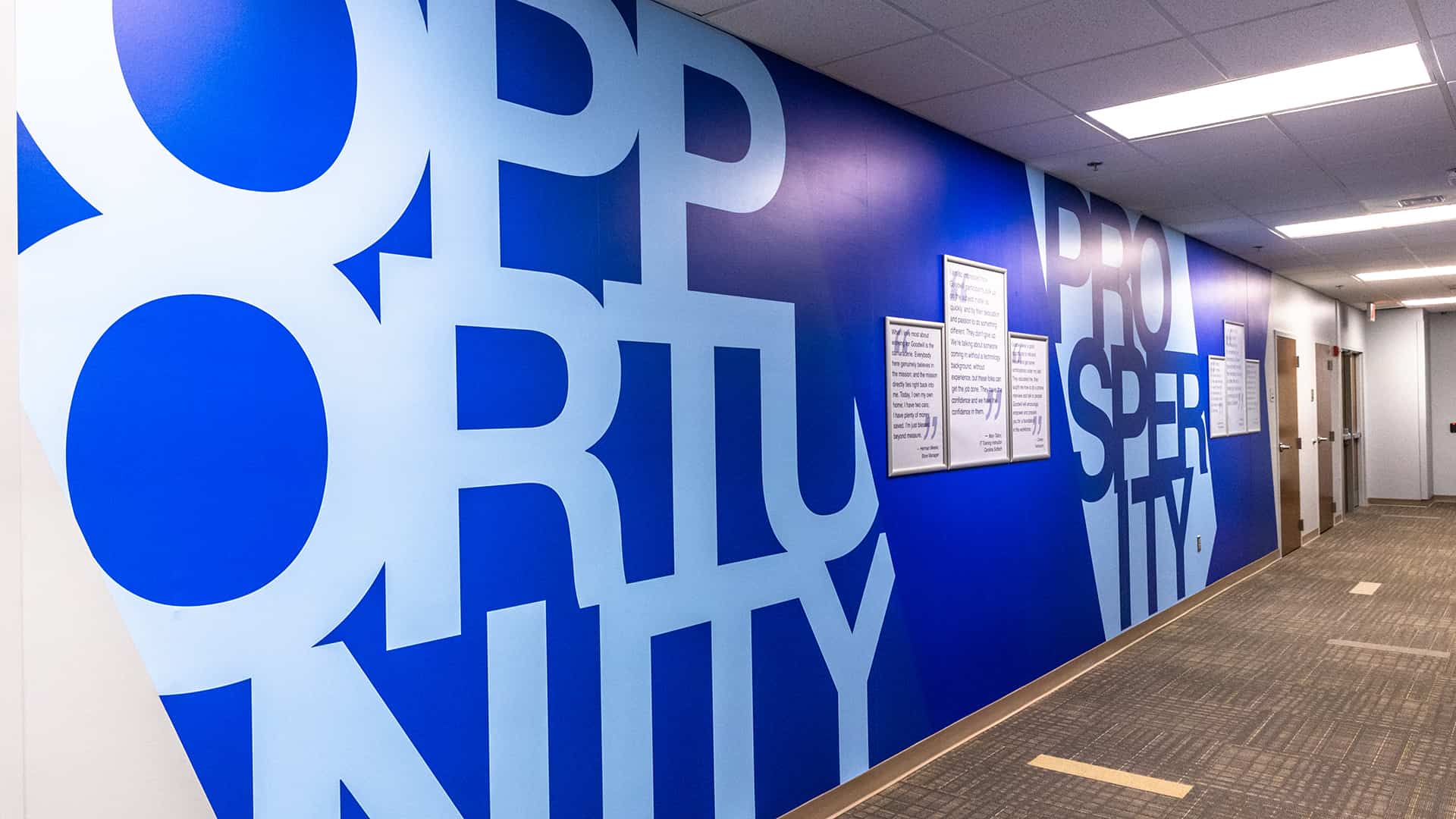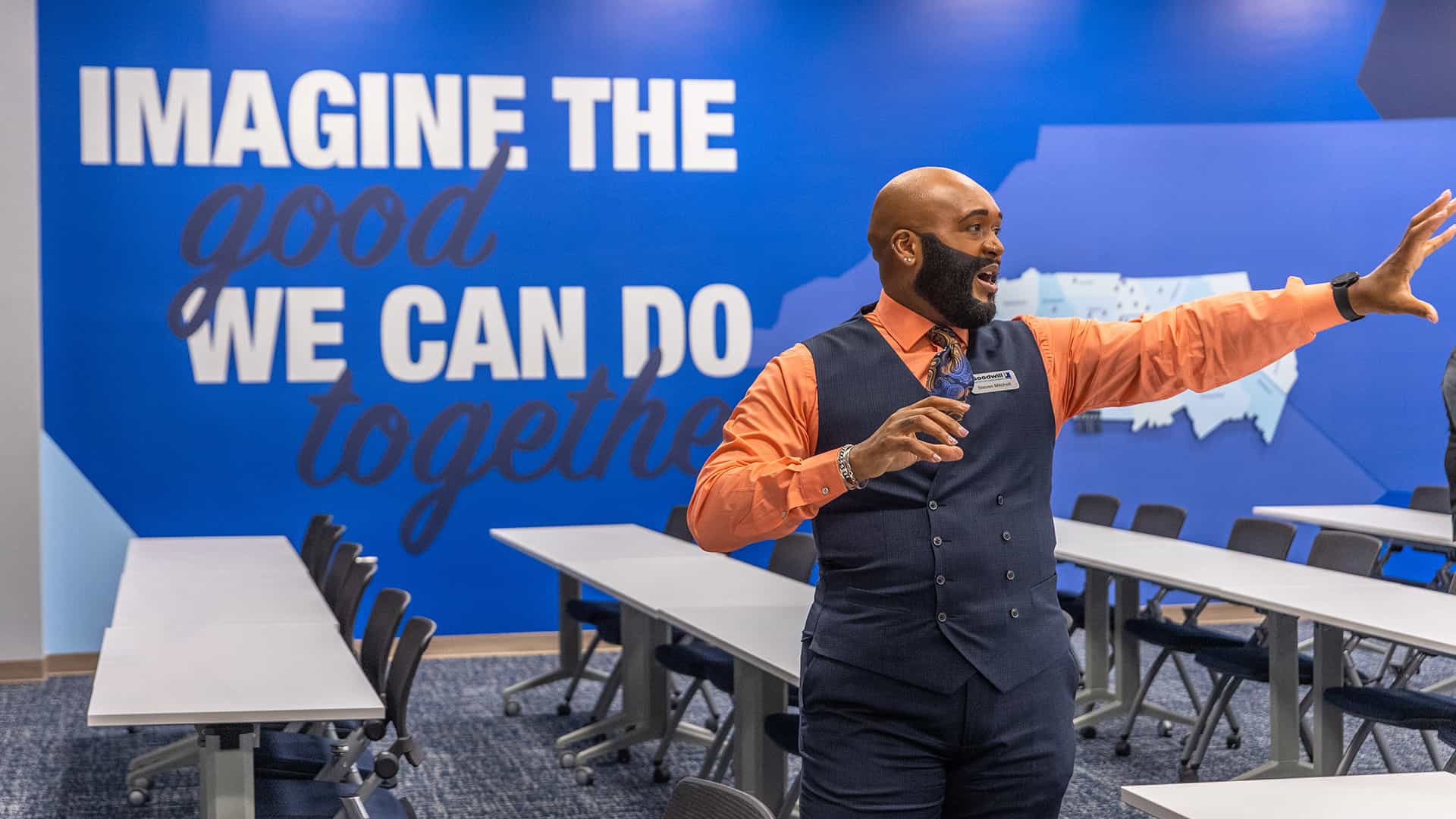“Workforce development programs like the ones offered here at Goodwill are transformative,” declared Kiyosha Jones during the recent ribbon-cutting event at which Goodwill of the Southern Piedmont unveiled the $1.7M renovation of its Opportunity Campus in Charlotte, NC. Kiyosha, a Goodwill client, originally received training as a business analyst in 2019. After completing additional courses at Goodwill, along with earning industry-specific certifications through her employer, she worked her way up to a quality assurance software tester.
Her story is inspiring—and, incredibly, not uncommon. In fact, Goodwill helped over 7,700 people advance their careers last year. To better meet the demand and create a more positive impact on the participants and communities it serves, Goodwill of the Southern Piedmont entrusted Little to deliver interior and technology updates to its career and employment center. The 70,000 square feet refresh included all classrooms, offices, meeting rooms, and hallways.
Full disclosure, before this project, my Goodwill experience was limited to my annual drive-thru donation drop and the occasional visit to a retail store. However, as our teams collaborated, I began to understand and appreciate the essential skills and career-building opportunities Goodwill provides. Along with my Little colleagues, I witnessed firsthand the unwavering dedication of the Goodwill teams and the meaning of purpose-driven work.
IDENTIFYING PROJECT GOALS
The design process began with our team immersing ourselves in Goodwill’s mission, vision, and organizational culture. Through active listening and engaging conversations, we were able to uncover opportunities and identify six project goals based on Goodwill’s core values and business objectives:
- Listen Actively
Increase employer and participant interaction. - Build a Village
Broaden community-building and connection - Bold Integration
Expand and integrate Goodwill services - Expand Mission Support
Optimize all the campus spaces - Improve Access
Streamline service delivery and increase access to Goodwill Opportunity Campus team members - Be Visible
Improve visibility with the campus layout
A TRANSDISCIPLINARY APPROACH
The entire project was inspired by the organization’s purpose to help people see possibilities, seize opportunities, and prosper. “See the possibilities” became our mantra, influencing every decision.
As a transdisciplinary firm, we leverage each of our design disciplines to maximize the potential of every project. For the Goodwill Opportunity Campus renovation, strategy, design, environmental graphics, and engineering professionals from Little—along with Goodwill’s cross-organizational team—pooled their expertise to solve for Goodwill’s vision and goals. Each project team member offered a unique skill set that together provided a rich and intentional approach to strategic planning and design. Collectively, this approach allowed for expanded perspectives and efficient problem solving.
The team crafted a solution that would create a vibrant and accessible campus. The project vision promoted Goodwill’s purpose in a way that would inspire collaboration, engage staff, support sound financial stewardship, and deliver innovative business, training, and employment solutions. Additionally, the Goodwill Opportunity Campus would enhance the vitality of Charlotte’s west corridor and serve as a valued community resource.
RESULTS BEYOND ARCHITECTURE
Our efforts yielded tangible results.
Key areas, such as the Job Resource Center (JRC) and the Goodwill University (GWU) classrooms, underwent a rejuvenation process that surpassed mere aesthetics. These spaces now stand as tangible embodiments of the Goodwill mission. The implementation of intentional environmental graphics, thoughtful wayfinding systems, and intuitive technology cater to the diverse needs of participants, staff, and the community.

The JRC service environments and team spaces foster interaction between participants, staff, and potential employers. Personal stories—like Kiyosha’s—are featured along the entryway to the career center, bolstering the confidence of participants and raising community awareness of the strength and capabilities of GWU graduates.
Similarly, the GWU classrooms were transformed into vibrant learning environments that foster connection and collaboration among participants, educators, and potential employers. These spaces express the energy within and support varying subjects and teaching methods while allowing for program expansion.


